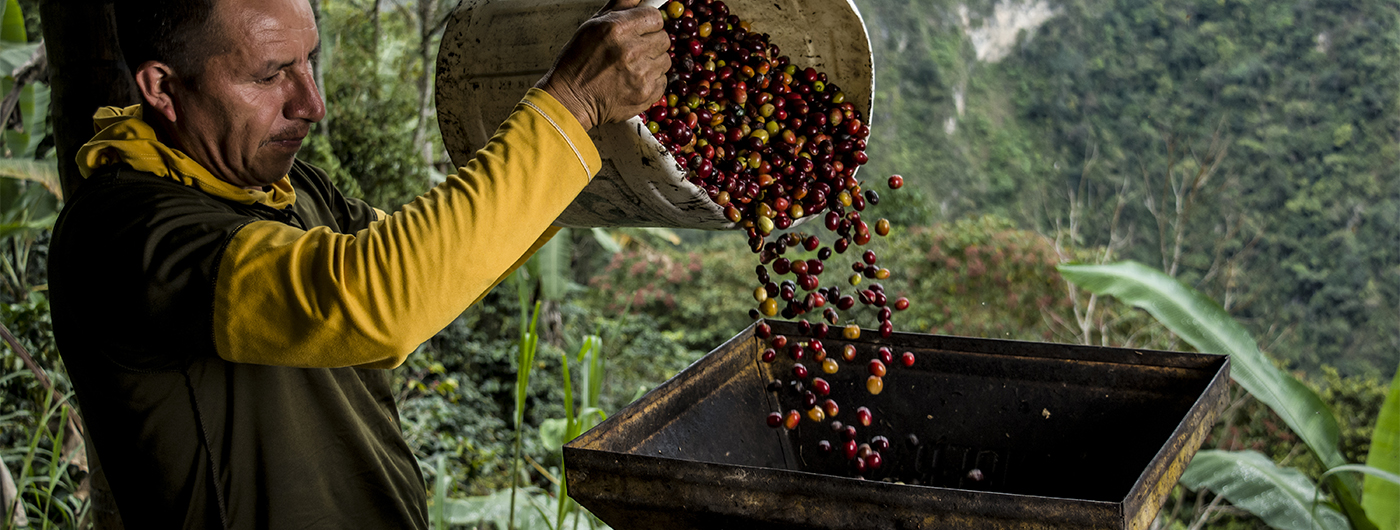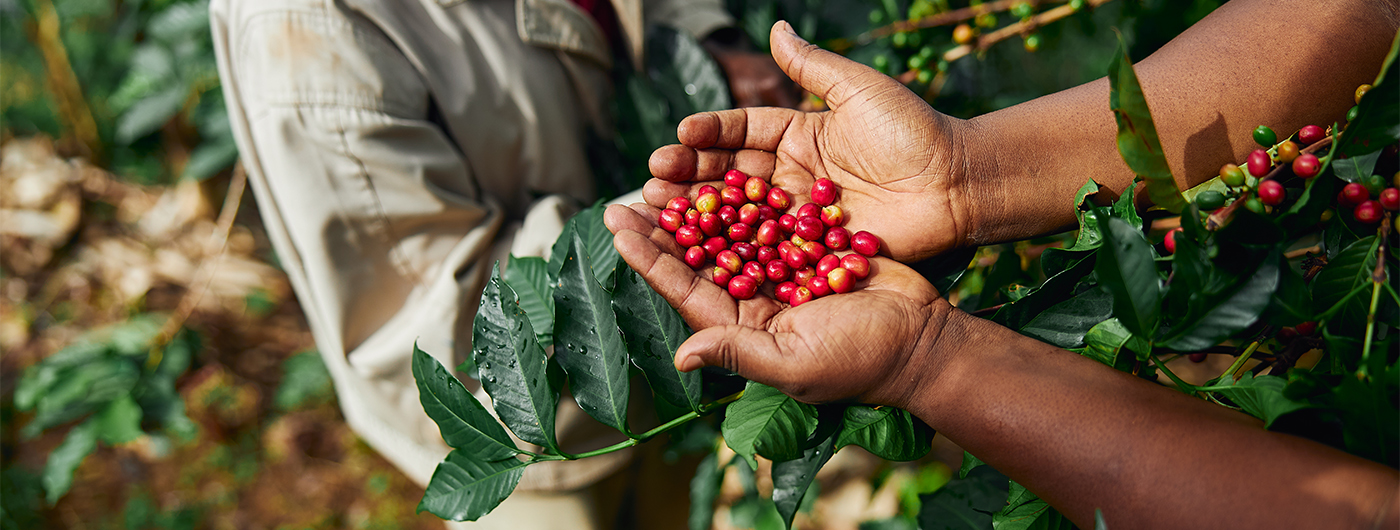

Coffee Market Analysis in Vietnam: Pre-Harvest Insights and Forecasts for the 2023 Season
The Vietnamese coffee market is poised to enter the 2023 harvest season with a complex tapestry of trends, challenges, and strategies. The industry’s significance to the nation’s economy cannot be overstated, making a thorough analysis of its various facets essential.
In this analysis, we’ve explored the production trends that underpin Vietnam’s status as a coffee powerhouse. Robusta coffee’s dominance, improved agricultural practices, regional variations, and the integration of technology collectively contribute to a stable and resilient production landscape. As the 2023 harvest season approaches, these factors position the industry for continued growth and productivity.
Vietnam’s coffee export performance has not only sustained but also thrived, contributing significantly to its economy. The diversification of export destinations, the value-added approach, and the industry’s adaptability have enabled it to weather challenges and maintain substantial market share. The 2022 export data underscores the nation’s presence as a global coffee player, laying the groundwork for the upcoming harvest season.
Stability in production and export is further bolstered by the industry’s commitment to sustainability. From sustainable farming practices and certifications to waste reduction and social responsibility, Vietnam’s coffee sector is embracing ethical and environmentally conscious approaches. This focus aligns with the growing global demand for responsible products and reinforces the industry’s position in the international market.
Price resilience remains a crucial aspect of Vietnam’s coffee market dynamics. The historical price trends, supply-demand equilibrium, and strategies to manage fluctuations demonstrate the industry’s adaptability and preparedness. With a range of measures in place, including strategic stockpiling and sustainability initiatives, the industry is poised to manage price volatility effectively.
Market diversification and a burgeoning focus on specialty coffee bring both challenges and opportunities to the forefront. The industry’s exploration of emerging markets, investment in processing technologies, and dedication to quality align with changing consumer preferences. As the 2023 harvest season approaches, these efforts position Vietnam’s coffee industry to tap into premium market segments and elevate its global standing.
As Vietnam’s coffee sector prepares for the 2023 harvest season, it stands at the crossroads of tradition and innovation, market stability and diversification, and sustainability and economic viability. Collaborative efforts across the supply chain, adaptive strategies, and a commitment to responsible practices will be pivotal in shaping the industry’s trajectory in the months ahead. The nation’s coffee story continues to evolve, driven by its ability to navigate complexities and seize opportunities in a dynamic global landscape.
CURRENT COFFEE MARKET LANDSCAPE
The Vietnamese coffee market has undergone notable changes in recent years. Vietnam is known as one of the world’s largest coffee producers and exporters, primarily focusing on the robusta variety. The country’s coffee production and export volumes have consistently increased, making it a key player in the global coffee trade.
PRODUCTION TRENDS
In the lead-up to the 2023 coffee harvest season, the production trends in Vietnam offer a comprehensive picture of the industry’s dynamics, incorporating real-world data and statistics from recent years.
a. Robusta Dominance:
Robusta coffee maintains its stronghold in Vietnam’s coffee production landscape. According to the data from the General Statistics Office of Vietnam, in 2022, robusta coffee accounted for around 97% of the total coffee output, equivalent to approximately 1.69 million metric tons. This robusta dominance is a testament to the adaptability of the variety to the country’s diverse climatic conditions.
b. Improved Agricultural Practices:
Vietnamese coffee farmers have been embracing modern agricultural practices to enhance both productivity and sustainability. The application of these practices is reflected in the increase in coffee yields. Over the past five years, coffee yields have risen from an average of 1.6 metric tons per hectare to approximately 2 metric tons per hectare, according to the Ministry of Agriculture and Rural Development.
c. Regional Production Variations:
While the Central Highlands region remains the epicenter of coffee cultivation, efforts to diversify production have resulted in growth in other areas. For instance, the northern province of Son La has been actively expanding its coffee cultivation, contributing to a broader geographic spread of production.
d. Technological Integration:
Technological advancements have led to notable improvements in coffee production. Precision agriculture techniques, such as remote sensing and satellite imagery, are being utilized for targeted fertilizer application and disease management. This integration of technology has contributed to increased efficiency and resource optimization.
e. Export-Oriented Approach:
Vietnam’s status as a significant coffee exporter is underscored by its export volumes. In 2022, the country exported approximately 1.47 million metric tons of coffee beans, generating export revenues of nearly $2.8 billion USD, as reported by the Ministry of Industry and Trade. This emphasizes the export-oriented nature of Vietnamese coffee production.
f. Harvest Labor Challenges:
Labor shortages during the harvest season have been a persistent challenge. According to the Vietnam Coffee and Cocoa Association, the shortage of skilled labor during peak harvest periods has led to production inefficiencies and potential yield losses. Mechanization efforts, including the adoption of coffee harvesters, are being explored to mitigate this issue.
g. Climate Resilience Measures:
Vietnamese coffee farmers have been implementing measures to address climate change impacts. The Ministry of Agriculture and Rural Development reported that the adoption of shade trees and soil conservation practices has increased, contributing to climate resilience. These efforts are crucial in light of irregular rainfall patterns and temperature fluctuations.
h. Sustainable Initiatives:
Sustainability certifications have gained traction in the Vietnamese coffee industry. As of 2022, over 200,000 hectares of coffee plantations have been certified under various sustainability programs, according to the Vietnam Coffee and Cocoa Association. This demonstrates the industry’s commitment to responsible practices.
The production trends in Vietnam’s coffee sector reflect a blend of tradition, innovation, and a proactive approach to addressing challenges. Through the dominance of robusta, the integration of technology, and efforts towards sustainability, the industry is poised for stability and growth in the upcoming 2023 coffee harvest season.
EXPORT PERFORMANCE
The export performance of Vietnam’s coffee industry has been a critical driver of the country’s economy, with substantial contributions to both revenue and global market share. Examining recent years’ data provides insights into the dynamics of coffee exports and their impact on the nation.
a. Export Volumes and Revenues:
In 2022, Vietnam continued its impressive performance in the coffee export sector. The Ministry of Agriculture and Rural Development reported that the country exported approximately 1.47 million metric tons of coffee beans, a slight decrease from the previous year due to weather-related challenges. Despite this, the coffee export revenues remained robust, amounting to nearly $2.8 billion USD, underlining the significant value the sector brings to the economy.
b. Key Export Destinations:
Vietnam’s coffee exports are distributed across a range of global markets. Notably, the European Union (EU), the United States, and various Asian countries have consistently been the primary destinations for Vietnamese coffee. The EU alone accounted for around 37% of total coffee exports in 2022, followed by the United States with approximately 17% and Japan with 9%, according to the Ministry of Industry and Trade.
c. Export Variety Breakdown:
Robusta coffee dominates Vietnam’s export composition, reflecting the country’s expertise in cultivating this variety. In 2022, robusta made up around 95% of the total coffee exports, while arabica and specialty coffee constituted a smaller portion. However, a gradual shift towards diversification, particularly in response to changing global consumer preferences, is becoming evident.
d. Processing and Value Addition:
Vietnam’s coffee export strategy involves not only exporting raw beans but also processed coffee products. The export of processed coffee, including instant coffee and roasted beans, adds value to the overall export revenue. In 2022, processed coffee exports accounted for approximately 20% of the total coffee export revenue, a testament to the country’s efforts to move up the value chain.
e. Global Coffee Market Share:
Vietnam’s consistent performance in the coffee export sector has solidified its position as a global coffee giant. The International Coffee Organization (ICO) reported that Vietnam’s share of the global coffee market has been consistently around 20%, highlighting the country’s importance in meeting global coffee demand.
f. Challenges and Future Prospects:
While the coffee export sector has shown resilience, challenges such as price volatility and fluctuating exchange rates remain. Additionally, the emergence of specialty coffee markets presents opportunities for Vietnam to diversify its product offerings and capture higher value.
g. Sustainability and Traceability:
As global consumers become more conscious of sustainability and ethical sourcing, initiatives for sustainable and traceable coffee production are gaining traction in Vietnam. This not only meets consumer demands but also positions Vietnamese coffee as a responsible and desirable choice in the international market.
Vietnam’s coffee export performance remains robust, with consistent volumes and revenues. The country’s ability to adapt to changing market dynamics, focus on value addition, and respond to sustainability demands will play a crucial role in shaping its position in the global coffee trade. The insights from the export performance data highlight the industry’s strengths and underscore the opportunities for growth in the upcoming 2023 coffee harvest season.
STABLE PRODUCTION
The stability of coffee production in Vietnam is a cornerstone of the country’s success as a global coffee player. Analyzing the factors contributing to this stability and delving into the production data provides a comprehensive understanding of the industry’s resilience.
a. Weather and Yield Consistency:
Vietnam’s diverse climatic conditions have historically contributed to a relatively stable coffee production. The Ministry of Agriculture and Rural Development reported that the climate in the Central Highlands, the primary coffee-producing region, has been favorable for coffee cultivation, with consistent rainfall and suitable temperature ranges. This consistency has helped maintain stable yields over the years.
b. Investment in Research and Development:
Research and development efforts have been instrumental in stabilizing coffee production. The Vietnam Coffee and Cocoa Research Institute (VCCRI) and various research centers have actively worked on developing disease-resistant coffee varieties and improved cultivation practices. This has helped mitigate the impact of pests and diseases on coffee production.
c. Adoption of Good Agricultural Practices:
The adoption of Good Agricultural Practices (GAP) has played a vital role in ensuring stable production. The Ministry of Agriculture and Rural Development’s data highlights the increasing implementation of GAP, including proper fertilization, irrigation, and pest management. These practices contribute to consistent yields and improved overall crop health.
d. Public and Private Sector Collaboration:
Collaboration between the public and private sectors has contributed to the stability of the coffee industry. The government’s support through policy frameworks, extension services, and infrastructure development has provided a conducive environment for coffee cultivation. Private sector investments in processing facilities and technology have also enhanced the industry’s stability.
e. Productivity Trends:
Vietnam’s coffee productivity has steadily improved over the years, as indicated by the data from the Ministry of Agriculture and Rural Development. In 2022, the average coffee yield per hectare reached approximately 2 metric tons, showcasing the effectiveness of modern agricultural practices and technology integration.
f. Risk Management Strategies:
Vietnamese coffee farmers have developed risk management strategies to mitigate the impact of potential challenges. Crop diversification, intercropping with shade trees, and investment in irrigation infrastructure are examples of strategies adopted to ensure stable production even in the face of climate fluctuations.
g. Quality Assurance Measures:
Ensuring consistent coffee quality is crucial for maintaining stable production. Vietnam’s Coffee Quality Contest, organized by the VCCRI, promotes quality improvement through competitions that recognize excellence in coffee processing and production. This focus on quality assurance contributes to stable demand and premium pricing.
h. Certification Programs:
Certification programs, such as the 4C Association and Rainforest Alliance, have gained traction in Vietnam. These programs emphasize sustainable practices and quality standards, further enhancing the stability of coffee production by aligning it with international market requirements.
Stable production in Vietnam’s coffee industry is a result of a combination of factors, including favorable climate conditions, research-driven advancements, and a collaborative ecosystem. The adoption of modern practices, risk management strategies, and quality assurance measures has contributed to steady yields and consistent coffee quality. As the 2023 coffee harvest season approaches, these aspects lay a strong foundation for maintaining stability in the industry.
MARKET DIVERSIFICATION
The concept of market diversification is gaining prominence in Vietnam’s coffee industry as it responds to evolving global consumer preferences and explores opportunities beyond its traditional export approach. A detailed analysis of this trend, supported by relevant data, provides insights into the strategies and potential outcomes of market diversification.
a. Shifting Consumer Preferences:
Changing consumer preferences, particularly a growing demand for specialty and high-quality coffee, are driving the need for market diversification. According to the International Coffee Organization (ICO), the global demand for specialty coffee has been on the rise, creating an avenue for Vietnamese coffee producers to tap into premium market segments.
b. Emerging Specialty Coffee Markets:
Vietnam has begun exploring emerging specialty coffee markets to diversify its export destinations. Data from the Ministry of Agriculture and Rural Development highlights an increase in exports of specialty coffee products, including arabica and high-quality robusta. For instance, in 2022, the export volume of arabica coffee increased by 25% compared to the previous year.
c. Domestic Consumption Growth:
Market diversification isn’t solely focused on exports. The growth of domestic coffee consumption presents an opportunity for producers to cater to changing preferences within the country. According to the Vietnam Coffee and Cocoa Association, domestic coffee consumption has been increasing steadily, fostering demand for a variety of coffee products.
d. Specialty Coffee Initiatives:
Vietnamese coffee producers are actively engaging in initiatives to enhance the quality of their coffee offerings. Specialty coffee competitions and certifications have gained traction, encouraging producers to focus on producing high-quality beans. These initiatives align with the diversification strategy, as premium products command higher prices in both domestic and international markets.
e. Investment in Processing and Packaging:
To tap into specialty coffee markets, investment in advanced processing and packaging facilities is crucial. The Ministry of Industry and Trade reports an increase in investments in processing technologies and packaging solutions to preserve the quality of specialty coffee beans during transportation.
f. Market Entry Challenges:
While market diversification presents opportunities, it also comes with challenges. The process of establishing a foothold in new markets requires understanding consumer preferences, complying with quality standards, and building brand recognition. These challenges underscore the need for strategic planning and collaboration.
g. Potential Benefits:
Diversification can result in several benefits for the Vietnamese coffee industry. These include reducing dependency on a limited set of export destinations, mitigating risks associated with price volatility, and increasing overall industry resilience. Furthermore, entering premium markets can lead to higher profit margins.
h. Sustainability and Traceability:
Diversification also intersects with sustainability and traceability initiatives. Specialty coffee markets often emphasize ethical sourcing and environmentally responsible practices. Vietnam’s commitment to these aspects can enhance its positioning in such markets.
Market diversification represents a strategic response to changing global dynamics and consumer preferences. The increasing focus on specialty coffee, both for export and domestic consumption, offers a pathway for Vietnam’s coffee industry to achieve higher value and differentiation. The industry’s ability to navigate challenges and leverage opportunities will determine the success of its diversification efforts in the upcoming 2023 coffee harvest season.
PRICE RESILIENCE
Price resilience is a critical aspect of Vietnam’s coffee industry, given the inherent volatility of global coffee markets. By examining historical price trends, supply and demand dynamics, and strategies to manage price fluctuations, we can gain insights into the industry’s ability to maintain stability in pricing.
a. Historical Price Trends:
Vietnam’s coffee industry has experienced price volatility over the years due to various factors, including weather conditions, geopolitical events, and currency fluctuations. The International Coffee Organization (ICO) data reveals that coffee prices reached a peak of over $2 per pound in 2011 but subsequently experienced a downward trend, hitting a low of around $1 per pound in 2019. The industry’s resilience is highlighted by its ability to adapt to these price fluctuations.
b. Global Demand and Supply Balance:
The balance between global coffee supply and demand significantly impacts price stability. In recent years, the demand for coffee has remained robust, driven by increasing consumption in emerging markets and specialty coffee segments. Vietnam’s consistent production and export volumes have contributed to maintaining a stable supply, helping mitigate drastic price swings.
c. Strategic Stockpiling:
To manage price volatility, Vietnam’s coffee industry has adopted strategic stockpiling practices. The Vietnam Coffee and Cocoa Association collaborates with the government to implement these strategies. By storing a portion of the coffee harvest, producers can release beans onto the market during periods of low supply, helping stabilize prices.
d. Export Diversification and Market Responsiveness:
Export diversification also contributes to price resilience. Vietnam’s flexible approach to market responsiveness allows it to adjust its export destinations based on changing demand and price trends. This adaptability minimizes the impact of price fluctuations by distributing risk across various markets.
e. Government Support:
The Vietnamese government plays a role in supporting price resilience through policy interventions. By providing market information, facilitating producer access to credit, and offering risk management mechanisms, the government aims to stabilize prices and protect the interests of coffee farmers.
f. Sustainable Practices and Premium Pricing:
Sustainable and traceable coffee practices are gaining prominence, allowing producers to command premium prices. The ability to offer certified sustainable coffee provides a buffer against price volatility, as consumers are often willing to pay a premium for responsibly sourced products.
g. Industry Collaboration:
Collaboration across the coffee supply chain is essential for maintaining price resilience. Cooperation between producers, processors, exporters, and traders enables effective risk management and responsive decision-making in the face of changing market conditions.
h. Future Price Outlook:
The future price outlook for Vietnamese coffee depends on a range of factors, including global economic conditions, climate impacts, and evolving consumer preferences. While short-term price fluctuations are inevitable, the industry’s resilience and adaptive strategies position it well to navigate challenges and capitalize on opportunities.
Price resilience in Vietnam’s coffee industry is a result of a combination of factors, including historical trends, demand-supply balance, strategic measures, and collaboration. By leveraging its experience, flexible market strategies, and commitment to sustainability, the industry is poised to manage price volatility effectively in the 2023 coffee harvest season and beyond.
SUSTAINABILITY FOCUS
The growing global emphasis on sustainability has prompted Vietnam’s coffee industry to integrate responsible practices into its operations. By delving into the initiatives, certifications, and data related to sustainability, we can gain insights into how the industry is aligning itself with global trends and ensuring its long-term viability.
a. Sustainable Farming Practices:
Vietnam’s coffee industry has been adopting sustainable farming practices to minimize environmental impact. The Ministry of Agriculture and Rural Development reports an increase in the use of organic fertilizers, integrated pest management, and water-efficient irrigation systems. These practices not only reduce chemical inputs but also enhance soil health and water conservation.
b. Certification Programs:
Certification programs have gained traction in Vietnam’s coffee sector, signifying a commitment to sustainable practices. The Rainforest Alliance and UTZ are among the most recognized certifications. According to the Vietnam Coffee and Cocoa Association, over 200,000 hectares of coffee plantations have been certified under these programs, promoting responsible agricultural practices.
c. Shade-Grown Coffee:
Shade-grown coffee cultivation has become an integral part of sustainability efforts. The integration of shade trees not only benefits coffee plants by regulating temperature and conserving moisture but also enhances biodiversity and provides habitats for beneficial species. Data from the Ministry of Agriculture and Rural Development indicates an increase in shade tree planting in coffee plantations.
d. Waste Reduction and Recycling:
The coffee industry is actively addressing waste management challenges. Coffee processing generates substantial byproducts, and innovative recycling initiatives have been introduced. For instance, coffee pulp, a byproduct of processing, can be converted into compost or animal feed. These initiatives contribute to waste reduction and the circular economy.
e. Carbon Footprint Reduction:
The focus on sustainability extends to carbon footprint reduction. The Ministry of Industry and Trade highlights that some coffee producers are adopting renewable energy sources and energy-efficient technologies in their operations. These efforts not only lower operational costs but also contribute to overall environmental sustainability.
f. Social Responsibility:
Sustainability encompasses social responsibility as well. The coffee industry’s efforts to improve working conditions for laborers, enhance the livelihoods of coffee-growing communities, and empower women in the sector are all indicative of a holistic approach to sustainability.
g. Consumer Demand for Sustainable Coffee:
The global demand for sustainably produced coffee is a driving force behind these initiatives. According to the International Coffee Organization, consumer awareness of ethical and sustainable coffee production is on the rise. As a result, coffee producers in Vietnam are responding to this demand by aligning their practices with sustainability principles.
h. Economic Viability and Long-Term Prospects:
Sustainability is not just an ethical choice; it also makes economic sense. Data from the Ministry of Agriculture and Rural Development suggests that adopting sustainable practices can lead to increased productivity, improved product quality, and access to premium markets, all of which contribute to the long-term economic viability of the coffee industry.
Vietnam’s coffee industry is proactively embracing sustainability, integrating responsible practices into its operations. Through certification programs, shade-grown cultivation, waste reduction, and social responsibility initiatives, the industry is demonstrating a commitment to long-term viability and global market alignment. As the 2023 coffee harvest season approaches, these sustainability-focused efforts position the industry well for continued growth and positive environmental and social impact.
Dr. James Tran Nguyen
Chief Strategy Officer & Vice Chairman of KAI Holdings


